The Philadelphia Museum of Art was bustling when Steve and I arrived for a special tour of the small but excellent show, Wrath of the Gods. The art historical exhibit pivots around one of the PMA’s blockbuster items, Peter Paul Rubens’ “Prometheus Bound,” a tour-de-force figure painting of the big-muscled god being killed by an eagle in a particularly gruesome fashion. It’s a large painting both beautiful and terrifying, a scene of torture that accentuates the vulnerability of flesh. I like the painting a lot better after the tour by Curator Christopher Atkins revealed its story — the artistic sampling from other works that Rubens employed; and the artist’s smart collaboration with nature painter, Frans Snyders, who painted the magnificent eagle.
Curatorial sleuthing pays off
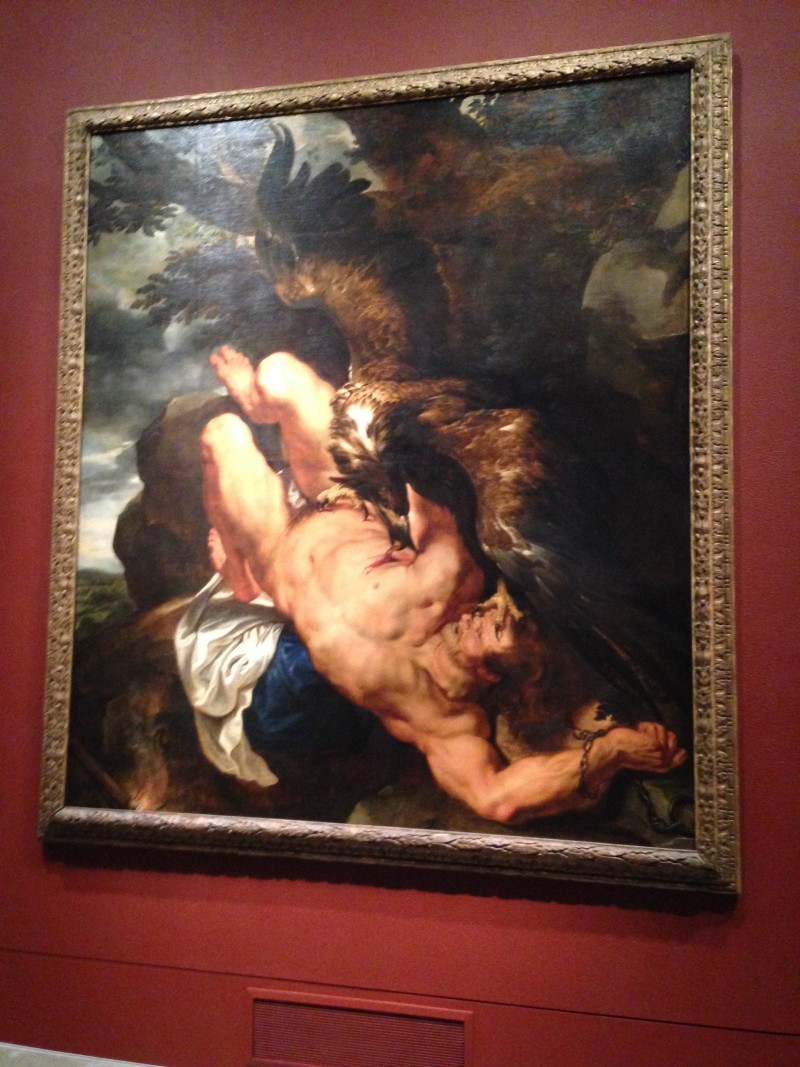
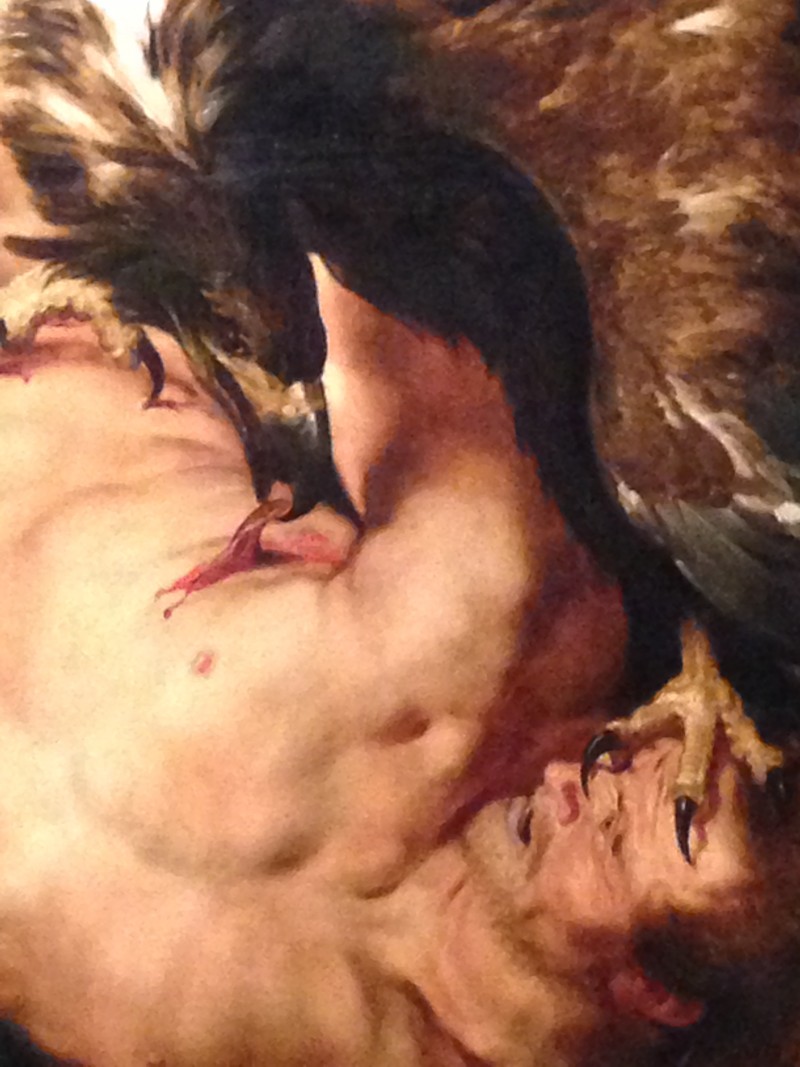
There’s nothing like being in a room filled with art as a curator walks you through the exhibit he’s put together — gesticulating with enthusiasm as he reveals the idea behind the show; the sleuthing out of sources; the by-turns serendipitous or difficult search for loans of works; the deep historical roots of the subject. Christopher Atkins, Associate Curator of European Painting and Sculpture before 1900, was in his element as he ushered us from one to another of the paintings of writhing, falling, tortured gods that surrounded us. The exhibit is in Room 155, whose red-painted walls enhance the drama and physicality of flesh impaled and imperiled.
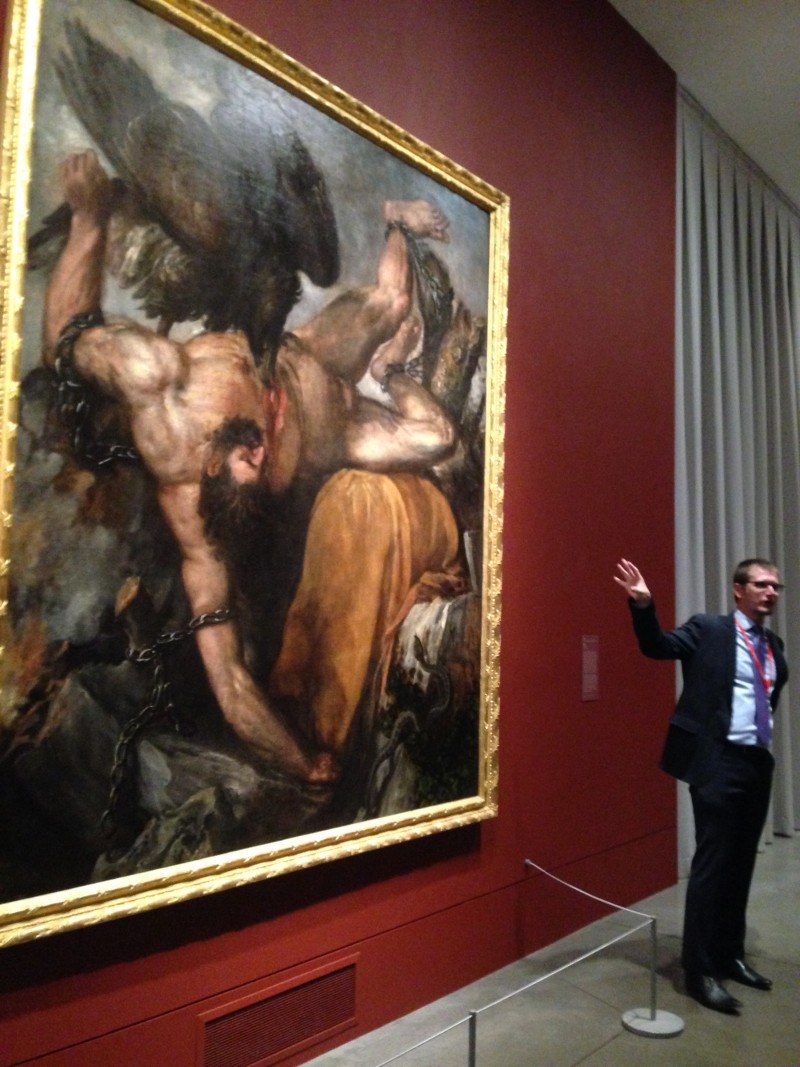
The show was a dream project, Atkins said. The museum had previously loaned its ” Prometheus Bound” to the Prado in Madrid, so, in the way that museums have of being collegial, the Prado loaned the PMA their Titian, “Tityus,” which predates and was an influence on Rubens. Digging into a single object (the PMA’s “Prometheus Bound”) and sleuthing out everything possible about it to tell the story is an art historian’s idea of the best job ever. It was great to be on the receiving end of all that knowledge and enthusiasm.
Rubens was a sampler/adapter/collaborator
Atkins’ detective work sleuthed out uncanny compositional similarities between Rubens’ Prometheus and Michelangelo’s Risen Christ of the Sistine Chapel. And of course, it is highly probable that the widely-traveled and intellectually sophisticated Rubens had seen the Risen Christ in Rome and sampled the pose, in his 16th Century way, turning the figure into an upside down version of Christ. Rubens also absorbed into his Prometheus painting, the heated passion and emotion in works like Titian’s “Tityus” and the ancient marble sculpture, Laocoon.
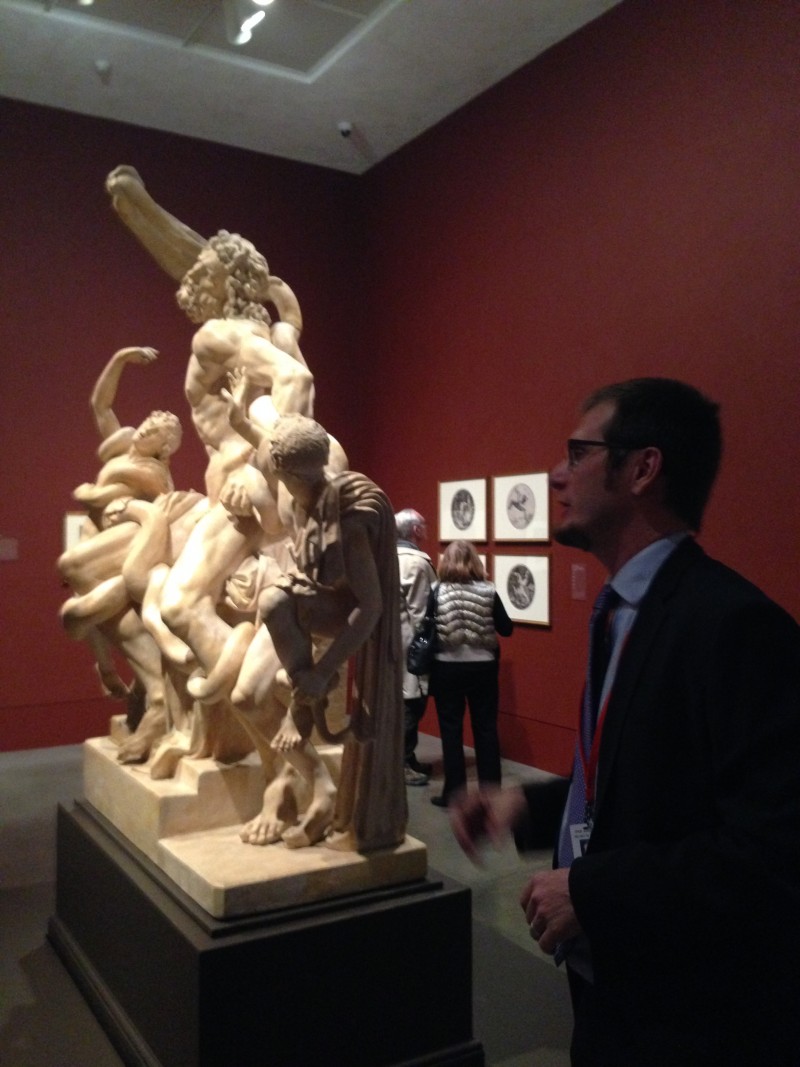
He was a sampler and an adapter. He also was a collaborator. The gorgeous eagle attacking Prometheus was a special collaboration with the best Northern European animal painter at the time, Frans Snyders.
Public Engagement via comic book
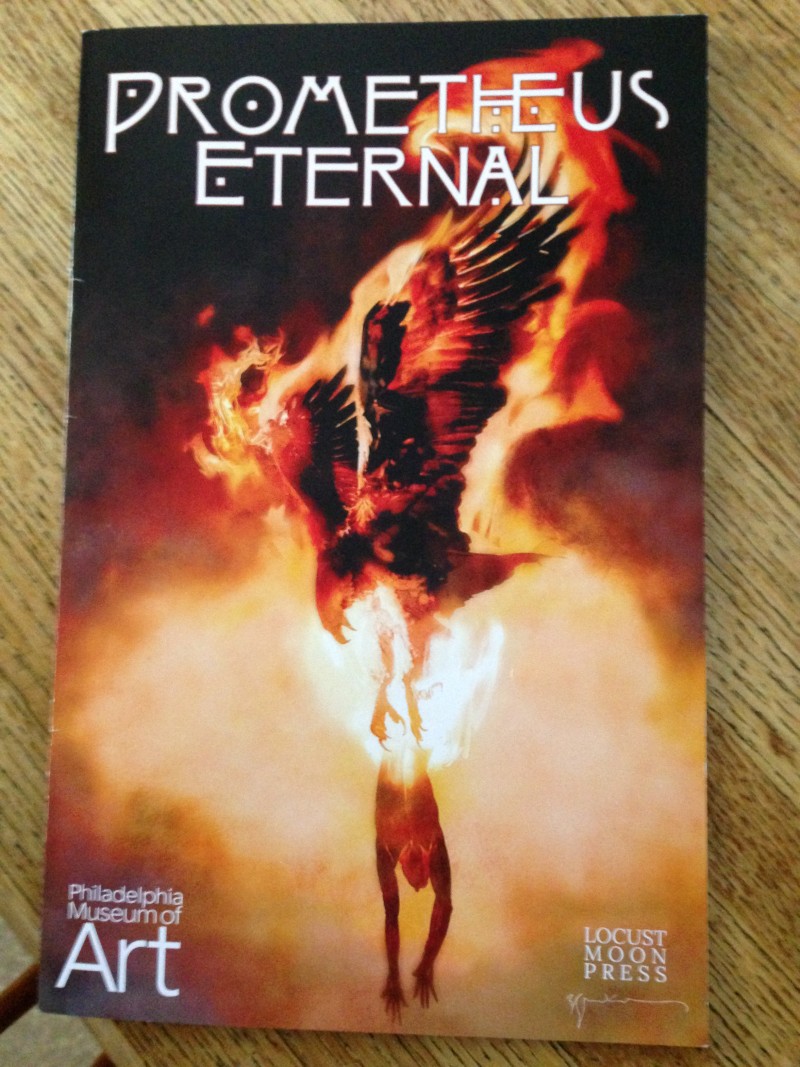
Museums have become centers for public-engagement, and curators need to think outside the box to help lay audiences connect with sometimes obscure ideas and times. “We did a catalog,” said Atkins, “but we also did a comic book.”
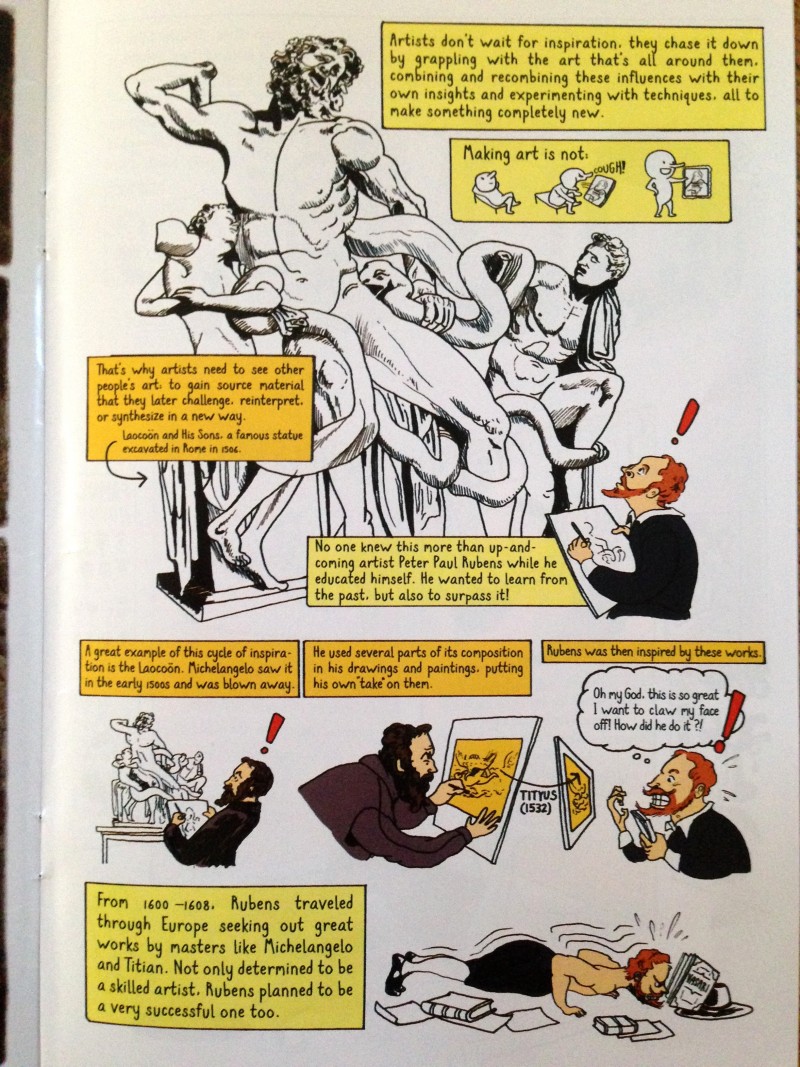
Local publisher, Locust Moon Press
Atkins and the museum worked with local publisher, Locust Moon Press to create a Prometheus-themed comic book, “Prometheus Eternal.” The themed comic book (printed by local printer, Fireball), rounds up eleven artists who were asked to let their imaginations run wild on the Prometheus story as told through Rubens’ “Prometheus Bound.” The book is a compilation of short treatments about the Prometheus story, or, in one case, which I loved best, a comical treatment about Rubens discovering the Italian painters and adapting them to his use.
“The exhibition is about artistic inspiration — Rubens looked at Titian and Michelangelo,” said Atkins. “We commissioned the (comic book) artists to respond.”
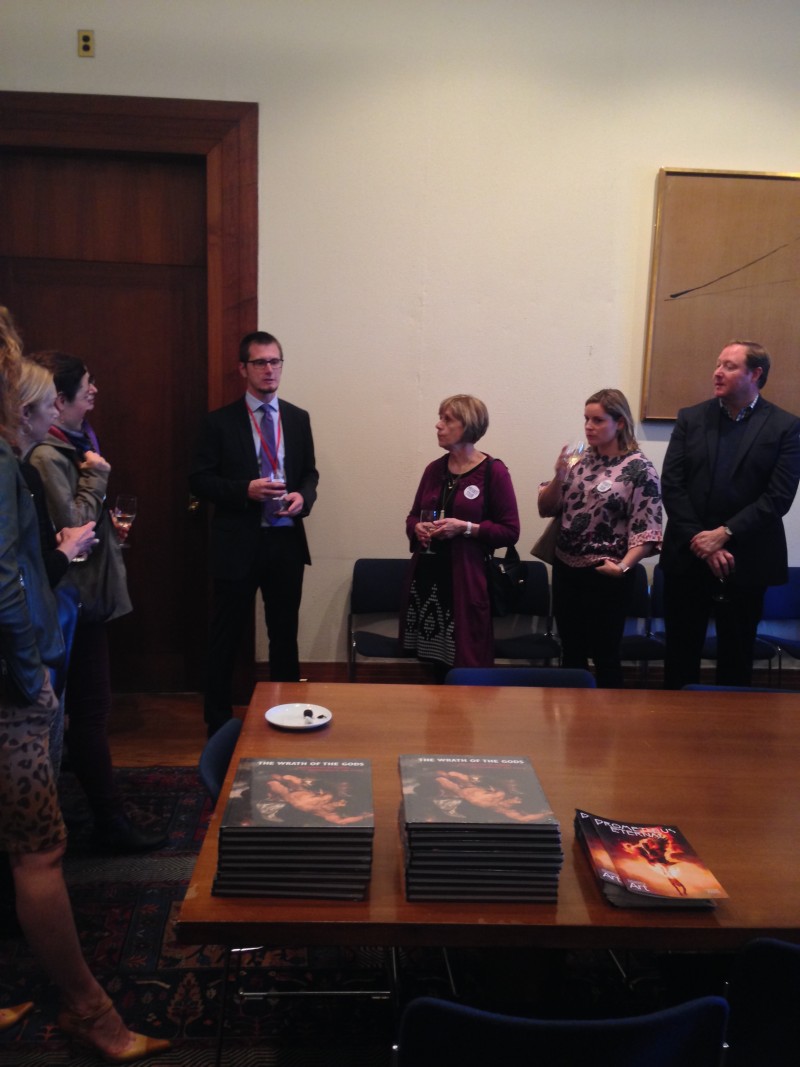
The exhibition, which also includes a double-sided Michaelangelo drawing and the plaster cast of the Laocoon, on loan from Pennsylvania Academy of the Fine Arts, is a great bit of storytelling, which unfolds in an engaging manner as you spend time in the room making your own discoveries. It’s a great show, don’t miss it.
Who is Prometheus
A final word on Prometheus. Prometheus is the Greek god with a soft spot for humanity, who stole fire from Mt. Olympus and gave it to humans, who were not thriving in their dark world. The giver of light was punished by Zeus — chained to a mountain top and attacked by an eagle, who devoured his liver. This eternal punishment transpires daily, according to the story. If this is not a comic book-ready story nothing is. Pick up a copy of the comic book in the gift shop. $6.00.
Wrath of the Gods: Masterpieces by Rubens, Michelangelo, and Titian, at the Philadelphia Museum of Art, Gallery 155, first floor, to Dec. 6. http://www.philamuseum.org/exhibitions/821.html








